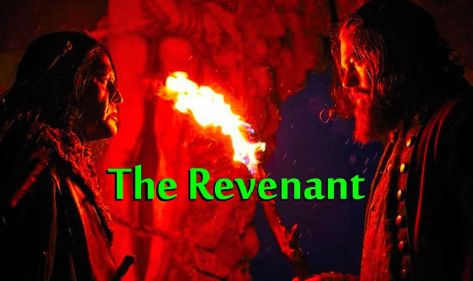
Arthur Redcloud as Hikuc, a Pawnee on his way to the Kitkahahki
Watching The Revenant do so well at the Oscars tonight, I feel a sense of complicated pleasure. It is a film that visits a newly imagined version of Pawneeland. The award-winning cinematography summons up a mountainish world that feels like a real place. But it isn’t; not really. What matters most to me at this moment is that the film features a number of Pawnee characters, a range of roles – this is rare for films that have touched on Pawneeland in recent decades. And those Pawnee characters have been finely crafted, nicely acted. Believable and human.
In all of its extravagantly crafted details The Revenant aims at a specific visual texture that the director has termed “authenticity.” The purpose is for this film to suspend us in the midst of a story that feels propelled by history. We are not to worry much about trying to sort out history from pseudo-history. Entering the theater, we already know it represents a rewritten past.
The Revenant was carefully designed to resonate with present-day racial storytelling, not with history. But we are encouraged by the rich detailing to equate this kind of story with history – a past that has racial Indians oppressed by racial whites. Hugh Glass serves as the moral compass. We, the audience, peer through his eyes. We hope for guidance toward our most uplifting contemporary multicultural values. What we demand from pseudo-history is something more real than history.
Many Pawnees today are descended from French-American fur traders from St. Louis. The residents of St. Louis were very diverse, dominated by French ancestry from Canada and New Orleans. The ties of the St. Louis families to Pawneeland were deep by the 1820s. In fact, Pawnees could be found there as residents not long after the founding of the city. If you have St. Louis ancestors going back to circa 1770, it is likely that you have Pawnee ancestors. There was no endemic warfare between the Pawnees and the St. Louis French-Americans. Nor were there ever any assaults on Pawneeland by French or American military forces.
But in early June 1823 the Arikaras did attack an American trade expedition on the Missouri River – this was an American group that included a good number of French-American traders. And an American military expedition did subsequently lay siege to an Arikara earthlodge city; they shelled the city by cannon-fire. They were accompanied and assisted by a large Sioux military force – along the Missouri River the Sioux were the first military allies of the Americans. A complex set of evolving relationships between the Arikara, Sioux, and Americans drove these events. It is impossible to frame this history as a racial rivalry of “Indians” versus “whites.” To accomplish this impossibility, The Revenant twists all of these details into an entirely new configuration of the past.
During the 1820s race was still a new idea in Pawneeland. The Pawnees had a long way to go before they would become full-fledged “Indians,” before they would completely absorb the tenets of racial identity systems. But the obscure and elaborate and simple historical mechanisms of race… this topic is not the primary theme of The Revenant. It really has to do with surviving an implacable narrative of social violence, a tale fraught with the mechanisms of war, vengeance, and slaughter.
In this movie, in this re-imagined Pawneeland, one must kill or be killed. And so, even though the Pawnees come across as humanized in the film, and even though this happens in a way that we haven’t seen in other films, all the Pawnee characters get murdered and massacred. That is, with the exception of one ghostly starving woman who survives, maybe.
Tonight I’m glad this film won a few awards. I’m glad for Pawneeland. I’m pleased to find a film contemplating a version of that world. It does matter when historical narratives get rewritten to suit film-narratives, but it is true enough that the complexities of history are sometimes not as real as the appeal of pseudo-history. Tonight, I suppose, feeling pleased that a film with Pawneeland at its heart has won Oscars for cinematography, best director, and best actor, perhaps it could be argued that not everything that is important in our storytelling is necessarily real. Not really.

….a few months ago a French/English speaking couple from Canada stopped in Genoa and gave us a call to visit the U S Indian School…..the lady had a fascinating story, her great-something Skidi grandfather was captured ,ended up in Canada, and bought by a French fur trader who gave him his freedom. I believe she said it was in the late 1700’s, early 1800’s…..the Pawnee married the fur trader’s daughter…..looking for her Skidi past , she ended up here in Genoa……Jerry
That really is a fascinating family story, Jerry. Thanks for sharing it here at Pawneeland! I hope she left Genoa with a more meaningful appreciation for Pawnee history and all the things that happened after her ancestor was taken captive. And it sounds like you and Nancy also learned something interesting, too. I hope they keep that history alive in their family.